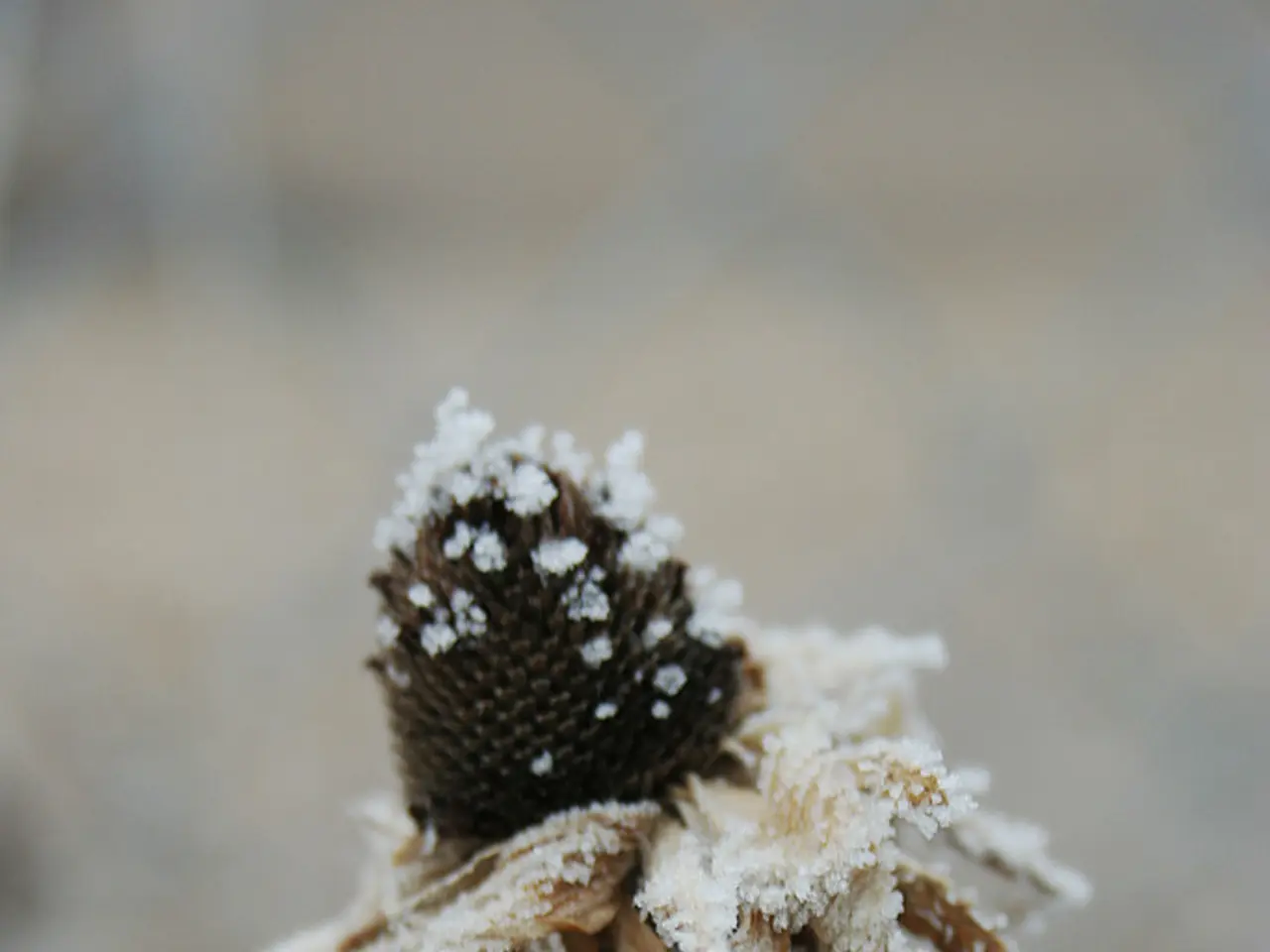Essential Winter Insulation Methods for Protecting Potted Plants: Crucial Tips to Keep Indoor and Outdoor Greenery Thriving
Potted plants can be a delightful addition to any indoor space, but winter can pose a challenge for their survival. Here are some effective strategies to ensure your potted plants thrive during the colder months.
Key Insulation Techniques
Choosing the right container material and size is crucial for insulating potted plants during winter. Frostproof containers made of materials like fiberglass, heavy plastic, or stone are ideal as they resist cracking in cold weather, unlike terra-cotta pots. Mulching the soil surface with 2–4 inches of organic material such as straw or compost can insulate roots and retain heat, while keeping mulch away from stems prevents rot. Employing floating row covers or frost blankets that fully cover plants and reach the ground can trap soil warmth and block frost. Secure the edges with weights or soil to prevent cold air entry. Placing thermal reservoirs such as water-filled containers near pots can absorb daytime heat and release it at night, moderating temperature swings.
Creating Microclimates
Grouping potted plants together in a sheltered location, ideally against a south-facing wall, provides extra warmth and protection from harsh winds. Using burlap wraps or cloches around sensitive plants can buffer against wind and frost while allowing airflow. For tender or valuable plants, installing cold frames or mini-greenhouses can extend growth through winter and stabilize temperatures.
Overwintering Care
Selecting appropriate potting soil for good drainage is essential to prevent root rot, which can be caused by saturated soil in freezing conditions. Water plants thoroughly before the soil freezes to ensure hydration, but avoid watering frozen soil as plants cannot absorb moisture then. Stop fertilizing 6–8 weeks before the first frost to prevent tender new growth vulnerable to cold damage. Consider applying anti-desiccants to broadleaf evergreens or conifers to reduce winter wind damage. Repot container plants every few years to maintain healthy root systems for better winter survival.
These combined approaches help maintain stable root temperatures, prevent frost damage, and support plant health through colder months. Insulating covers, mulches, strategic placement, and careful watering are particularly effective in creating warmer microclimates essential for overwintering potted plants successfully.
Straw, leaves, and old blankets can be used to wrap around pots for insulation. It's crucial to maintain a consistent moisture level in the soil, never allowing it to dry out completely. Larger volumes of soil retain heat longer than small ones, helping to sustain the plant's roots during chilly nights. Insulating potted plants with burlap or old blankets can act as a cozy barrier against the cold.
When temperatures freeze, it's important to match the plant's cold hardiness to the indoor environment. Avoid placing plants near heat sources, as they can dry out. Transition plants gradually to prevent shock when moving them back outside.
Glen, an experienced gardener with over 15 years of hands-on experience in garden maintenance, design, and landscaping services, shares his insights through a blog. His latest posts are about Garden Fungicides, Candy Cane Peppers, and Watermelon harvesting. The key to helping potted plants survive the winter is careful watering and protecting them from the harsh elements. Winter can be challenging for potted plants because their roots are exposed to colder air above ground. With these strategies in mind, you can ensure your potted plants flourish all year round.




